Silent Era Home Page > Home Video > Treasures from American Film Archives

Reviews of silent film releases on home video.
Copyright © 1999-2025 by Carl Bennett
and the Silent Era Company.
All Rights Reserved. |
|
Treasures from
American Film Archives
(1893-1960)
|
Contents: Blacksmith Scene (1893), Caicedo, King of the Slack Wire (1894), Luis Martinetti, Contortionist (1894), Demolishing and Building Up the Star Theatre (1901), The Gay Shoe Clerk (1903), Move On (1903), Dog Factory (1904), Interior New York Subway, 14th Street to 42nd Street (1905), Three American Beauties (1906), The Thieving Hand (1908), Princess Nicotine; or, The Smoke Fairy (1909), White Fawn’s Devotion (1910), Her Crowning Glory (1911), The Lonedale Operator (1911), The Land Beyond the Sunset (1912), The Confederate Ironclad (1912), I’m Insured (1916), Hell’s Hinges (1916), Snow White (1916), Beautiful Japan (1918) [four exerpts], The Original Movie (1922), The Toll of the Sea (1922), The Chechahcos (1924), [Japanese-American Communities] (1927-1932), The Fall of the House of Usher (1928), The Keystone “Patrician” (1928), Accuracy First (circa 1928-1929), West Virginia, the State Beautiful (1929), Groucho Marx’s Home Movies (circa 1933), The News Parade of 1934 (1934), We Work Again (1937), Spies (1943), The Battle of San Pietro (1945), Negro Leagues Baseball (1946), and other sound era films.
The preservation of our motion picture heritage is the single most-important charge of the film archives of the world. With nitrate filmstock, the original media of this 19th and 20th century art form, on an inevitable path to its own chemically-sourced self-destruction, there is a desperate rush to not only recover prints of films that are known to exist and those previously presumed lost but also to copy those prints to new negatives and prints before their nitrate originals decompose any further. All of this preservation work is performed within the limitations of underfinanced preservation budgets managed by understaffed archives. Annually, decisions must be made by archive officials as to which films are to be copied to preservation materials and which films must continue to languish in a more-or-less limbo-like countdown to destruction, films that sometimes exist in a single known print.
This collection, prepared under the auspices of the National Film Preservation Foundation, contains 50 films preserved by American film archives, both large and small. The films themselves are both large and small, feature and fragment, all of greater and lesser significance depending upon the responses of each individual viewer. The documentary film is represented, as is the fiction film. There are home movies, amateur films, and experiments in method and expression. The corporate product film is here, along with the government film and the independent film. The films themselves span the years from 1893, when the infant technology was still experimental and had yet to be formally introduced to the world, through the surprisingly-recent 1985. Several of the films are preserved from the only known surviving prints or, in the case of a few of these films, the only prints that were ever made. The collection is a joyous experience for the cinema lover, but it can also be the cause of a residual sadness at the thought of the films, already gone, that could have been saved or those yet to be lost forever because we won’t be able to muster the necessary preservation resources in time.
The majority of the films in the collection represent the silent era years, from 1893 through 1929, and they are inventoried here.
With the sword of Damocles above their heads, archives strive as quickly as possible to save both the important and the, frankly, not-so-important films of the late 19th century and the early 20th century from loss. Each preservation decision is made knowing that the unpreserved films with be taken from us by time’s impartial and unsentimental march forward. The sword will come down and we will be left with only what films we have deemed most important to save and severed forever from the rest. While all of the surviving films from cinema’s earliest years are unequal in their artistic value, every one of them are equally important in their historic and cultural importance. And this collection contains many valuable films that reflect diverse aspects of emotional, sentimental and intellectual importance.
The 2005 rerelease edition was made possible through the financial support of The Cecil B. DeMille Foundation and Sterling Vineyards.
We also urge you to join us in supporting the preservation efforts of America’s film archives.
— Carl Bennett
|
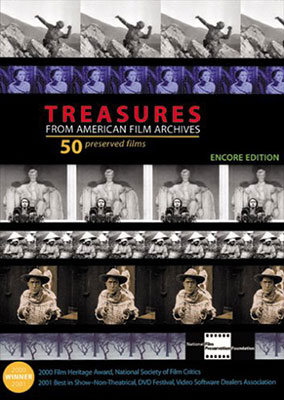 National Film Preservation Foundation National Film Preservation Foundation
2000/2005 DVD edition
Treasures from American Film Archives (1893-1960), black & white, color-tinted black & white, and color, 642 minutes total, not rated, including Blacksmith Scene (1893), black & white, 1 minute, not rated, Caicedo, King of the Slack Wire (1894), black & white, 1 minute, not rated, Luis Martinetti, Contortionist (1894), black & white, 1 minute, not rated, Demolishing and Building Up the Star Theatre (1901), black & white, ? minutes, not rated, The Gay Shoe Clerk (1903), black & white, 1 minute, not rated, Move On (1903), black & white, ? minutes, not rated, Dog Factory (1904), black & white, ? minutes, not rated, Interior New York Subway, 14th Street to 42nd Street (1905), black & white, 5 minutes, not rated, Three American Beauties (1906), color-tinted black & white, 1 minute, not rated, The Thieving Hand (1908), black & white, ? minutes, not rated, Princess Nicotine; or, The Smoke Fairy (1909), black & white, ? minutes, not rated, White Fawn’s Devotion (1910), black & white, ? minutes, not rated, Her Crowning Glory (1911), black & white, ? minutes, not rated, The Lonedale Operator (1911), black & white, ? minutes, not rated, The Land Beyond the Sunset (1912), black & white, 14 minutes, not rated, The Confederate Ironclad (1912), black & white, ? minutes, not rated, I’m Insured (1916), black & white, 3 minutes, not rated, Hell’s Hinges (1916), black & white, ? minutes, not rated, Snow White (1916), black & white, 63 minutes, not rated, Beautiful Japan (1918) [four exerpts], black & white, 15 minutes, not rated, The Original Movie (1922), black & white, ? minutes, not rated, The Toll of the Sea (1922), black & white, ? minutes, not rated, The Chechahcos (1924), black & white, ? minutes, not rated, [Japanese-American Communities] (1927-1932), black & white, ? minutes, not rated, The Fall of the House of Usher (1928), black & white, ? minutes, not rated, The Keystone “Patrician” (1928), black & white, ? minutes, not rated, Accuracy First (circa 1928-1929), black & white, ? minutes, not rated, West Virginia, the State Beautiful (1929), black & white, ? minutes, not rated, Rural Life in Maine (circa 1930) [excerpts], black & white, 12 minutes, not rated, Groucho Marx’s Home Movies (circa 1933), black & white, ? minutes, not rated, The News Parade of 1934 (1934), black & white, 10 minutes, not rated, Rose Hobart (1936), black & white, 19 minutes, not rated, We Work Again (1937), black & white, ? minutes, not rated, The Autobiography of a Jeep (1943), black & white, 10 minutes, not rated, Spies (1943), black & white, ? minutes, not rated, The Battle of San Pietro (1945), black & white, ? minutes, not rated, Negro Leagues Baseball (1946), black & white, ? minutes, not rated, Marian Anderson: The Lincoln Memorial Concert (1939) [excerpt], black & white, 8 minutes, not rated, and other sound era films.
National Film Preservation Foundation, distributed by Image Entertainment, NATD9706DVD (rereleased as NATD0918DVD), UPC 0-14381-97062-3 (rereleased as 0-14381-09182-3).
Four single-sided, dual-layered, Region 0 NTSC DVD discs; 1.33:1 aspect ratio picture in full-frame 4:3 (720 x 480 pixels) interlaced scan image encoded in SDR MPEG-2 format at 6.0 Mbps average video bit rate (capable of progressive scan upscaling to ? fps); Dolby Digital (AC3) 2.0 stereo sound encoded at 192 Kbps audio bit rate, and Dolby Digital (AC3) 2.0 mono sound encoded at 192 Kbps audio bit rate; English language intertitles (silent era films), no subtitles; chapter stops; four cardboard wrapped plastic trays with 150-page book of program notes (rereleased with four smaller bookets) in cardboard slipcase; $99.99 (rereleased at $69.95).
Release date: 3 October 2000 (rereleased 10 May 2005).
Country of origin: USA
Ratings (1-10): video: 8 / audio: 8 / additional content: 3 / overall: 8.
|

|
Original 2000
release packaging
|
The DVD collection begins with a Tony Sarg’s Almanac animated cartoon entitled The Original Movie (1922) by Sarg and Herbert Dawley, which chronicles the first motion pictures, made in prehistoric times. The animation is very detailed, is represented in silhouette cutouts, and is very fluid for its time. 8 minutes. Transferred windowboxed from a 35mm preservation print prepared from a very good 28mm diacetate reduction print.
The Edison company’s experimental Kinetoscope film Blacksmith Scene (1893) is the earliest entry in the collection. Three men work a hot metal piece and avail themselves of a cool drink. Shot in the Edison Black Maria studio. 26 seconds. Transferred full-frame from an excellent 35mm preservation print duplicated from a very good but speckled 35mm nitrate print.
Caicedo, King of the Slack Wire (1894) shows a rare (for an Edison film of this vintage) out-of-doors performance on tightrope. 25 seconds. Transferred full-frame from a 35mm preservation print prepared from a good but moderatly contrasty 35mm nitrate print.
Luis Martinetti, Contortionist (1894) is an Edison Black Maria view of Martinetti performing on gymnastic rings. 26 seconds. Transferred full-frame from a 35mm preservation print prepared from a good contrasty 35mm print.
Demolishing and Building Up the Star Theatre (1901) is a Biograph time-lapse view of the demolition of the Star Theatre in New York City. The film was intended to also be run in reverse. 2 minutes. Transferred full-frame from a 35mm preservation print copied from a very good Library of Congress paper print.
The Gay Shoe Clerk (1903) has previously been available on home video from a number of sources. A forward shoe clerk dallies with a willing young woman until her chaperone objects. 73 seconds. Transferred full-frame from a very good but slightly contrasty 35mm preservation print (note the incompatible remnant frameline at the bottom of the picture) prepared from a 35mm nitrate negative.
Move On (1903) is an Edison actuality film of a street market in New York City, broken up by a fist-shaking policeman who forces street vendors to ‘move on.’ 1.5 minutes. Transferred full-frame from a 35mm preservation print prepared from an excellent 35mm nitrate negative.
Interior New York Subway, 14th Street to 42nd Street (1905) is a Biograph actuality film documenting a subway ride through New York’s new extension of its public transportation system. 5 minutes. Transferred full-frame from a 35mm preservation print of an excellent 35mm nitrate negative.
Three American Beauties (1906) is an exit film, shown to indicate to audiences the end of a theater program, color-tinted in a stencil method akin to Pathécolor. 43 seconds. Transferred windowboxed from a very good 35mm nitrate print with original color tints.
The Thieving Hand (1908) is Vitagraph’s combination crime-comedy and trick film. An armless man acquires the troublesome limb from a thief. 5 minutes. Transferred full-frame from a 35mm preservation print from an excellent 35mm print.
Princess Nicotine; or, The Smoke Fairy (1909) is Vitagraph’s famous special effects film, full of trick shots and oversized props and sets. 5 minutes. Transferred full-frame from a 35mm preservation print from an excellent 35mm print.
White Fawn’s Devotion (1910) is a tragic love story of a Native American woman and her white husband, produced in America by Pathé Frères. 11 minutes. Transferred full-frame from an excellent 35mm preservation print prepared from an original 35mm nitrate print.
Her Crowning Glory (1911) is a Vitagraph comedy starring America’s first comedy film star, John Bunny, with Flora Finch and a young Helene Costello. 14 minutes. Transferred full-frame from a 35mm preservation print prepared from an excellent 35mm nitrate negative.
The Lonedale Operator (1911) is the famous D.W. Griffith thriller starring 15-year old Blanche Sweet, remade by Griffith as The Girl and Her Trust (1912). The original intertitles and an important color-tinting sequence have been been recreated for this preservation print. 17 minutes. Transferred windowboxed from a very good 35mm preservation print prepared from the original 35mm nitrate negative.
The Land Beyond the Sunset (1912) is a maudlin Edison melodrama of a destitute New York newsboy who is shown a route from squalor by members of the Fresh Air Fund. One of the best-looking silent era films in the collection. 14 minutes. Transferred windowboxed from a 35mm preservation print prepared from an excellent though slightly speckled 35mm print.
The Confederate Ironclad (1912) is a Civil War drama from Kalem Company, Incorporated, starring Anna Q. Nilsson and Guy Coombs, with a brief role by D.W. Griffith protege Miriam Cooper. The ironclad is a steel-reinforced warship. 16 minutes. Transferred full-frame from a very good though slightly flat and scuffed 35mm print.
I’m Insured (1916) is a Gaumont-American animated cartoon by Harry Palmer, the story of an intended suicide. 3 minutes. Transferred full-frame from a 35mm preservation print of an excellent 35mm positive print.
Hell’s Hinges (1916) is a Western feature drama of the supposedly pious turning corrupt (Jack Standing) and the supposedly unredeemable turning to good (William S. Hart). The print is missing its main title but features its original art title intertitle cards. One of four feature films in the collection. 64 minutes, with approximately 36 minutes color-toned. Transferred full-frame from a 35mm preservation print from a moderately speckled and scuffed but still very good original 35mm nitrate print.
Snow White (1916) is a Famous Players production of the famous fairy tale, starring the lovely and diminutive Marguerite Clark. The requisite dwarves are here, and they are quite good, but forget the Disney character names. The film’s original narrative intertitles, set in a Gothic typeface, are hard to read. 63 minutes. Transferred full-frame from a 35mm color preservation print of a very good but occasionally splice-choppy and moderately speckled and scratched 35mm color-toned print, with missing fragments.
Four exerpts from Beautiful Japan (1918), produced by Benjamin Barsky, show documentary travelogue footage of Japanese urban, rural and cultural scenes. Some shots are transferred too fast for natural motion. This is the worst-looking silent era film in the collection. 15 minutes. Transferred full-frame from a preservation print prepared from the soft-detailed and constrasty sole surviving 16mm reduction print.
The Toll of the Sea (1922) is an early Technicolor feature melodrama starring Anna May Wong. The red-green color process film is stunning in this 1985 restoration. The final minutes of the film have not survived, but have been implied here in intertitles drawn from writer Frances Marion’s scenario and by new footage of the Pacific Ocean taken with an original two-strip Technicolor camera. Another of the highlights of the collection. 54 minutes. Transferred full-frame from a 35mm preservation print prepared from the original 35mm nitrate Technicolor camera negatives.
The Chechahcos (1924) is a feature fiction film production of the Alaska Moving Picture Corporation, shot in Alaska and directed by Lewis H. Moomaw (who was involved in other independent production companies located in the Pacific Northwest). A young ‘orphaned’ girl grows up in Alaska to discover love and a lost mother. 86 minutes. Transferred full-frame from a 1999 35mm preservation print prepared from a recently-discovered excellent (though slightly flat) 35mm print.
The exerpts from Japanese-American Communities (1927-1932) includes candid 16mm amateur footage of Japanese-Americans taken by Reverend Sensho Sasaki in Stockton, California, and Tacoma, Washington. 7 minutes. Transferred full-frame from two separate 16mm prints.
The Fall of the House of Usher (1928) is James Sibley Watson Jr.’s and Melville Webber’s bizarre and Caligarian version of Edgar Allan Poe’s story, obliquely conveyed but still an interesting avant garde benchmark independently produced in Rochester, New York. One of the highlights of the collection. 13 minutes. Transferred windowboxed from an excellent preservation print prepared from the slightly-flawed original 35mm nitrate negative.
The Keystone “Patrician” (1928) is exerpted from an advertising film for the Keystone Aircraft Company promoting its large ‘Patrician’ commercial airplane. 6 minutes. Transferred full-frame from a good 16mm print.
Accuracy First (circa 1928-1929) is comprised of two amateurishly-shot exerpts from a training film for Western-Union employees handling telegram transmissions. 5 minutes. Transferred full-frame from a very good 16mm print (the film’s original format).
West Virginia, the State Beautiful (1929) is presented here in five exerpts from a feature-length travelogue documentary shot by amateur photographer and educator Ottis Rymer Snodgrass. The hand-held photography is shaky but documents several urban and rural West Virginia views of the late 1920s. 8 minutes. Transferred full-frame from an original 16mm print.
The notable sound era films in the collection include:
Groucho Marx’s Home Movies (circa 1933), silent footage of Groucho and his family outside their Long Island? home. 2 minutes.
The News Parade of 1934 (1934), a Hearst Metrotone News newsreel compilation overview of the major news stories of the year. 10 minutes.
We Work Again (1937) documents the WPA’s efforts to bring employment back to African-American workers. Includes footage of the final four minutes of 20-year old Orson Welles’ stage production of Shakespeare’s Macbeth, set in Haiti; footage previously thought to not to exist. 15 minutes.
Spies (1943), a WWII vintage Warner Brothers Private Snafu cartoon in black & white, voiced by Mel Blanc. 4 minutes.
The Battle of San Pietro (1945), written and directed by John Huston, with music by Dmitri Tiomkin. Produced for the U.S. Army Pictorial Service. 33 minutes.
Negro Leagues Baseball (1946), comprised of fascinating footage concentrating mostly on infield players from the Indianapolis Clowns (the Harlem Globetrotters of baseball) with a few incidental views of members of the Kansas City Monarchs. Priceless for baseball fans, and another of the highlights of the collection. Silent, with jazz score. 8 minutes.
The musical accompaniment for the silent era films is predominently piano performances, with scores selected, arranged and performed by Martin Marks. Marks contributes information on the music selected for the various scores to the program book included in the set.
The program notes book features information on each film in the collection, written by Scott Simmon. The book notes have been entirely duplicated as text notes on the collection’s discs, making the printed book a bit superfluous.
Descriptive information on each of the participating film archives has been narrated by actor Laurence Fishburne, and is accessed through each disc’s menu system.
The collection packaging is comprised of a slipcase of thin cardboard that is too flimsy to adequately protect the program book and the four clear plastic DVD trays wrapped in black cardboard covers that can easily fingerprint and wear. The flimsy slipcase is far less important to us than sturdy ‘keep cases’ that could have protected the collection’s discs without premature packaging wear.
For our comparative reviews of some of the individual films in this collection, see our The Chechahcos on home video, Dog Factory on home video, The Fall of the House of Usher on home video, The Gay Shoe Clerk on home video, Hell’s Hinges on home video, Snow White on home video and The Toll of the Sea on home video pages.
We highly recommend this DVD collection as a representative cross-section of American film archive holdings; its contents will entertain and even move you.
|
This Region 0 NTSC DVD edition has been discontinued
and is . . .
|

|
|
|
Other silent era BLANCHE SWEET films available on home video.
Other EARLY FILMS of the silent era available on home video.
Other SHORT DRAMA FILMS of the silent era available on home video.
Other SHORT COMEDY FILMS of the silent era available on home video.
Other CIVIL WAR FILMS of the silent era available on home video.
Other CRIME FILMS of the silent era available on home video.
|
|

LINKS IN THIS COLUMN
MAY TAKE YOU TO
EXTERNAL WEBSITES
•
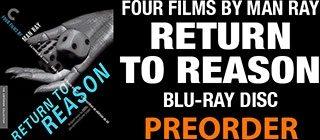

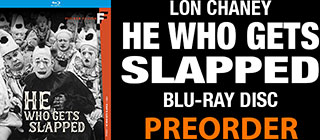
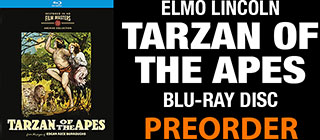

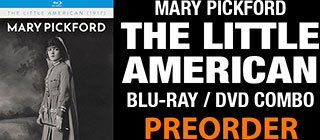

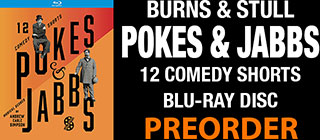


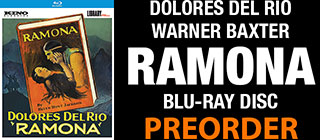
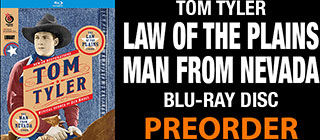
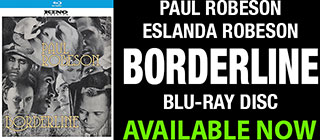
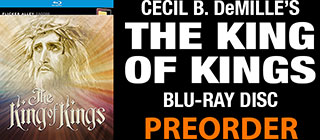
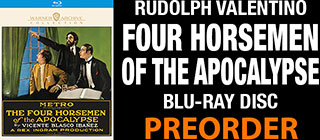
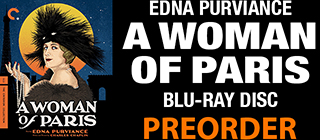
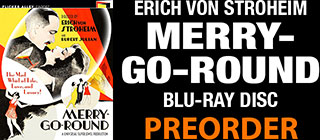
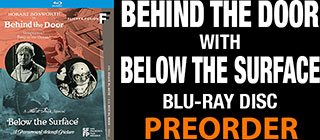
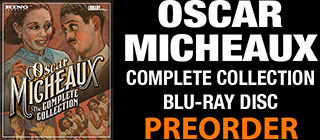
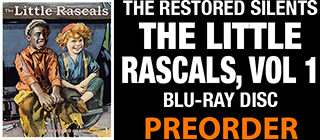
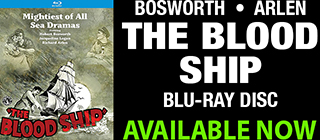
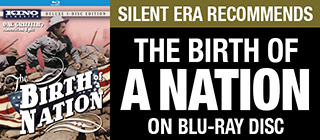
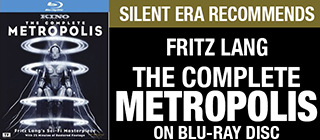

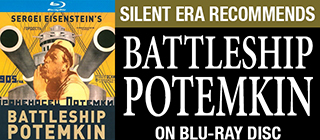
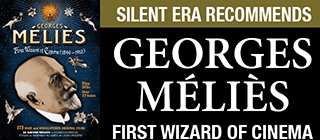

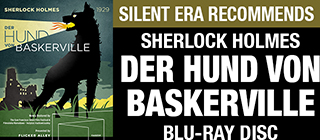
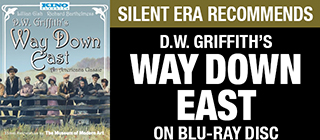

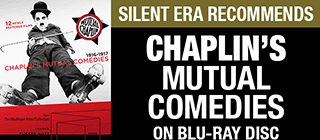
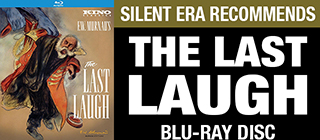
•
|




































